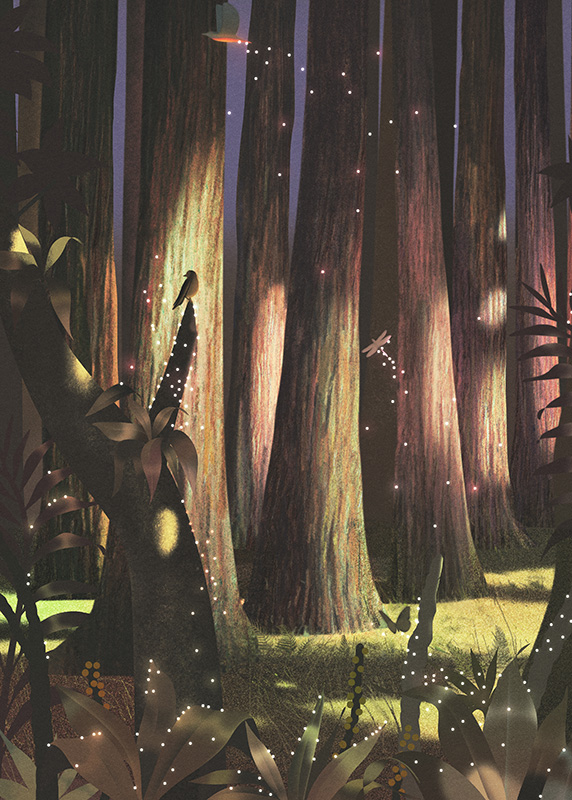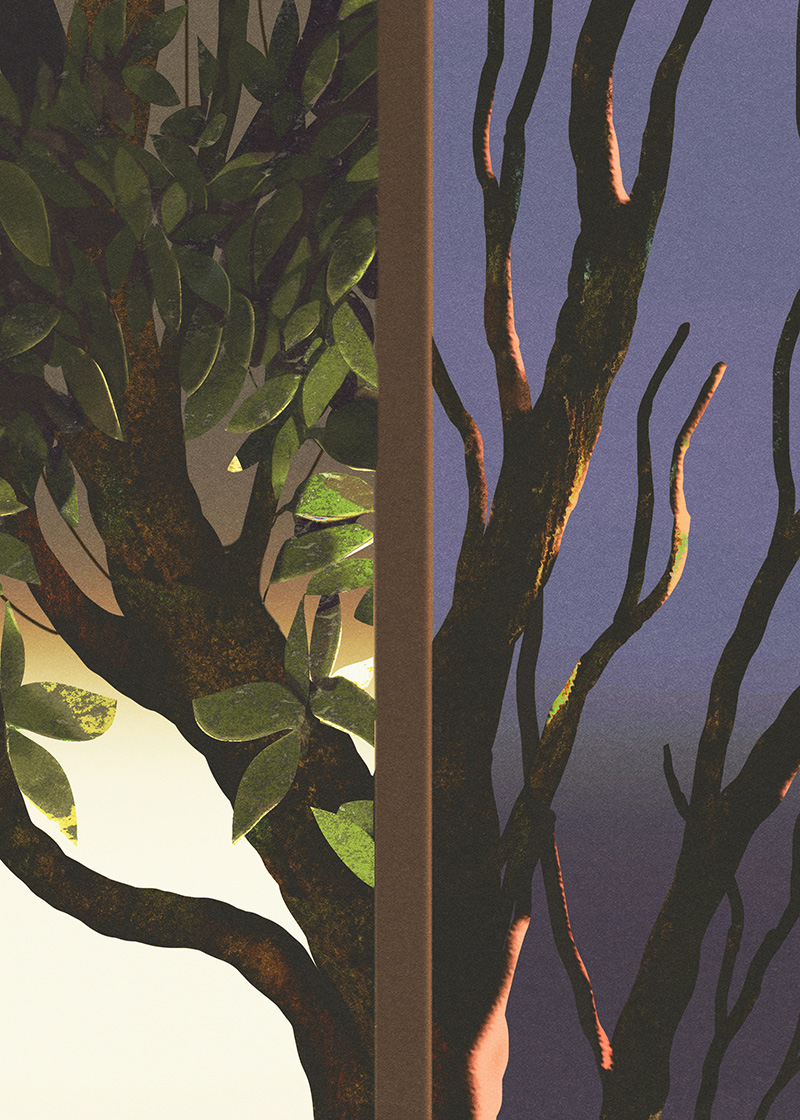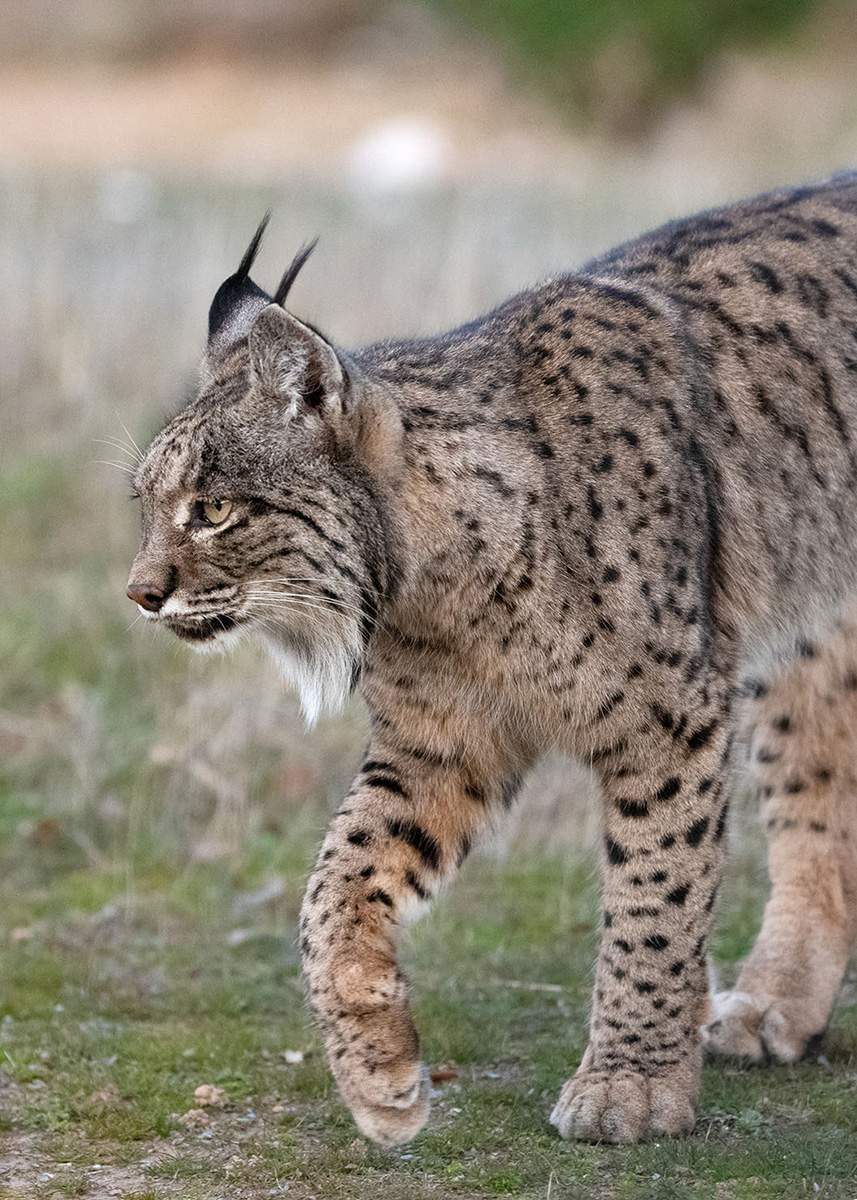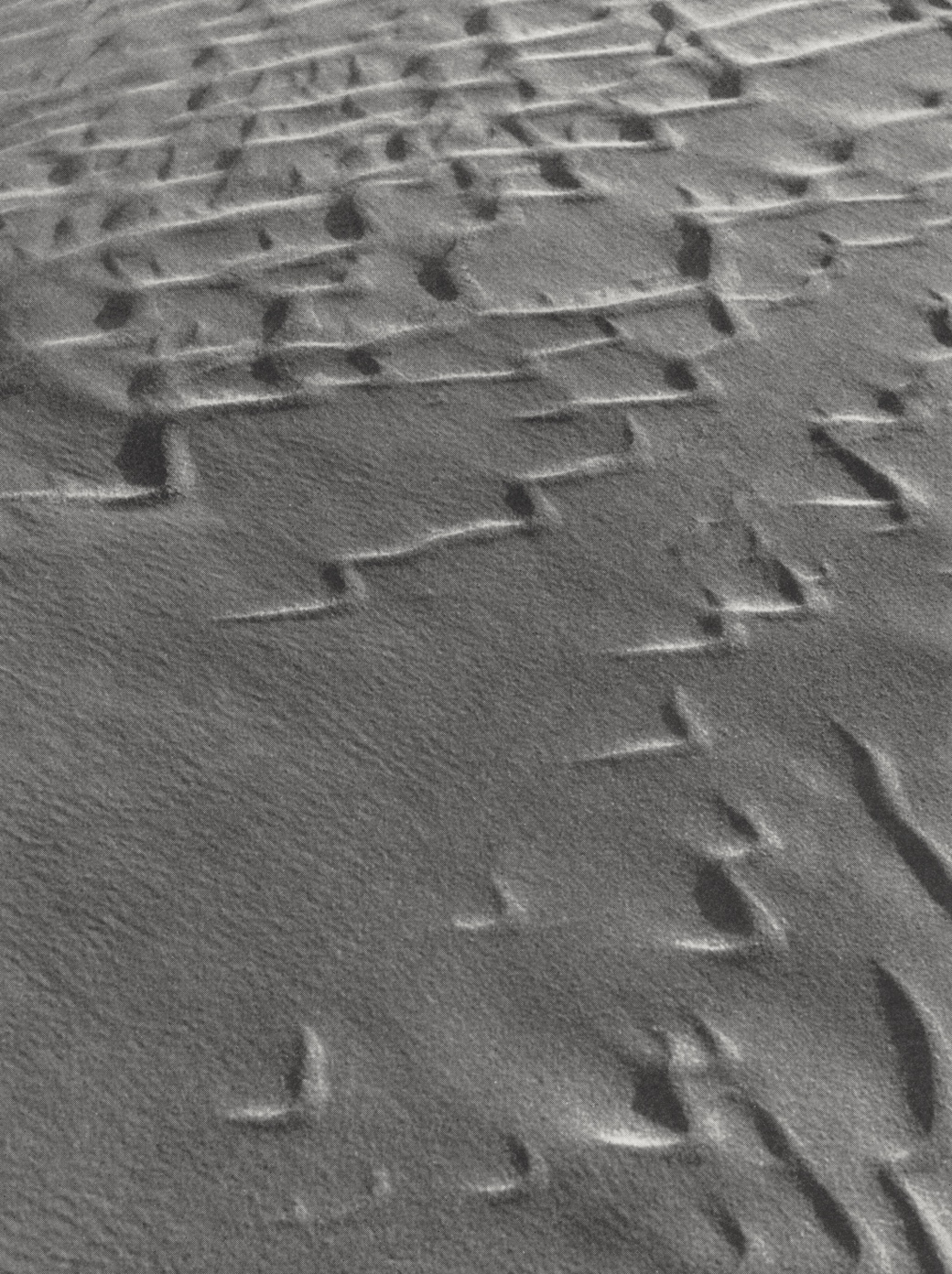
Gina Rae La Cerva is a geographer, environmental anthropologist, and the author of Feasting Wild: In Search of the Last Untamed Food. Her writing has been published in Leonardo/ISAST by MIT Press, THE Magazine, Sage Magazine, Feedback: The Open Humanities Press, The Santa Fe Reporter, and Gender and Forests: Climate Change. She holds degrees from Yale University, The University of Cambridge, and Vassar College. La Cerva is a National Science Foundation Graduate Fellow and recipient of Yale’s William R. Burch Prize.
As she collects wild foods during the pandemic, Gina Rae La Cerva considers the widespread loss of traditional feminine knowledge and how an ancient understanding of wild medicine could serve today’s fragmented world.
I watch my mother’s hands as she waters her garden in the dusty heat of a New Mexico sunset. My mother’s hands are gnarled like tree roots. They twist and bulge with arthritis, marking years of use and injury. Internal scars from a well-lived, rough life. My mother’s hands wield weird magic when she connects to plants. It’s as if her touch alone can force tender shoots from the dry desert soil. As if a mere stroke of her fingers can unfurl leaves, push roots deeper into the ground, lift stems, and plump the tomatoes.
My sister has inherited this gift. Her purple-tasseled corn reaches over the fence line. It waves to the sunflowers, just as tall. By July the squash are engorged. The oyster mushrooms build fleshy cities in a wooden box nearby. She grows lemon balm, an anti-viral and anti-anxiety. Nearby is a nettle plant that volunteered, good for burns and inflammation. Each plant is an embodiment of the most precious resource here: water. My sister conducts botanical experiments, trying to figure out how to grow more with less. How to keep her plant babies wet and happy beneath the mirrored sun.
Over the course of our history, humans have used nearly thirty thousand plants for food and medicine. Most of these plants grew wild. The places where we first evolved into a gathering species were likely the open patches in dense African forests. In the sunlit gaps within the canopy, left behind by the tramplings of large animals, we gathered useful herbs and palms and berries. To bear witness to nature’s abundance demanded the invention of new languages. In elaborating techniques to process plants and finding words to describe the flavors, we invented culinary incantations. We learned to speak and cook in synthetic form. It was an approach beyond the intellect, and so, the first cuisines had an aesthetic of chance. We felt at home in the dark. It was as if our manifold cultures sprang directly from the earth itself.
Gathering was long associated with the feminine, with the quiet art of noticing when buds engorge, berries ripen, and mushroom burst. Today, much of this knowledge has been lost or forgotten, and our diets have dramatically contracted to just a few cultivated varieties. When we lost wild foods in our everyday lives, we also lost the embodied feminine knowledge associated with those plants. Women’s alchemical ability to turn vegetative matter into nutrients and cuisines was systematically discredited. Women’s ability to heal with nothing more than buds, leaves, and roots was violently denied. We lost a necessary reverence for the wild and for the feminine. It was a two-headed death.
The plant magic the women in my family practice today is a domesticated version of something very old, passed through infinite generations of women gathering wild edibles. “Your great-grandmother Esther was tall and stern. And quite beautiful,” my mother tells me. “She took her tea the Russian way: strong and bitter with a cube of sugar under the tongue.” My mother remembers her foraging for a wild plant, something she called sour grass, a type of wild spinach with a tangy taste. Esther cooked it into a light-green drink. She called the finished product chav. Perhaps it reminded her of an earlier time in her life, before she fled her country for a safer existence in this one. A tonic for the grief of placelessness.
The only picture I have ever seen of my great-grandmother Esther is in a carved frame in my mother’s house. It is from her wedding day. She wears a delicate tiara on top of a simple veil. The white gauze spills over her thick hair, which has been woven into intricate braids on either side of her head. She holds a bouquet of white roses and lilies. She has thick, close-set eyebrows, and dark, heavy-lidded eyes. Her thin lips turn down into a slight frown. I do not know if she was in love with the man she just married. Her resigned expression seems to embody the Hebrew saying, if there’s a doubt, there’s no doubt.
Sometimes I worry I’ve been cursed with this doubt.
In the first weeks of the pandemic, the only thing that kept my mind feeling calm was going for walks. I foraged for mullein, juniper berries, pine tips, over-wintered rose hips, mistletoe, and sage. I would brew it into a tea to boost the immune system and clear the lungs. As I walked, I thought about survival. This thing humans excel at and yet are always attempting.
Humans have been hunters for millennia, and while zoonoses certainly occurred in the past, there is evidence that these infections are on the rise. The increasing prevalence of novel diseases like COVID-19 are thus not caused exclusively by this very old practice, or because of a rise in the practice of eating wild animals, but by large-scale changes in the entire ecology of the planet. Climate change, agricultural intensification, and deforestation have all contributed to the emergence of new viruses. There is more contact between sick humans and sick wildlife. We are sourcing food from fragmented ecosystems where fundamental ecological processes are under assault.
At some point in our history, survival meant domestication. During the rise of the first agricultural cities, the crowded aggregation of people and domesticates—grain, goats, cats, dogs, rats, sparrows, and other uninvited pests—created a perfect epidemiological storm that led to the evolution of new diseases such as smallpox and the bubonic plague. Today, more people live in cities than in rural areas, a very recent and very massive demographic shift the world has not seen before. Indeed, urbanization may be one of the most significant reasons for the rise in new zoonotic viruses, and the growth of megacities has created the perfect conditions for the development of new diseases.
The live wild animals sold in urban markets are crowded together and immunocompromised. They are stressed out and scared. Pathogens flow between species at an unprecedented rate, in ways that would not occur in the forest, where animals generally evolved to be elusive and solitary. The bats might infect a monkey, who might pass it on to his tree mates, but the civet cat would not be sitting next to them in a cage, terrified and malnourished. While COVID-19 emerged in China, the circumstances for similar zoonoses to arise exist all over the world. A product of a planet of nearly eight billion people feeding itself, devouring flesh, creating new ecosystems while they do it.
We lost a necessary reverence for the wild and for the feminine.
It feels like a time of no future. There is no way to know what’s coming next. How does one plan for uncertainty? My dad likes to remind me that other generations went through periods of such upheaval. WWI and WWII. The Vietnam War, Cold War, and ’70s oil embargo. I push back. Never has it felt like we are facing so many existential threats at once. Beyond the immediate danger of the pandemic, we must contend with mass extinctions, climate change, increasing water scarcity, deeply systemic racism, corporate consolidation, and the commodification of every aspect of life. We are in the midst of unearthing centuries of collective trauma. This pain and fear are entwined in our very identities. It must be uprooted, healed, and reimagined.
It is said: the future is female. But what does this mean? Is it just like the old days, when women were called upon to clean up the mess? Now that everything has gone sideways, it is our turn to put in the difficult work of turning it all around? And what does female even mean anymore in a time when we are acknowledging that gender is socially constructed and there is no such thing as binaries? Everything lies on a spectrum. We must throw out the fixed and rigid rules. Where, then, does the feminine exist? Is it in the watery emotions or the sweet sensual? Is it in fertility and rebirth? Nourishment and growth? Is it hidden in the moment of creation itself? In the simple necessity, yet complicated luxury, of survival?
My great-grandmother Esther faced her own existential crisis when she fled her home in Poland. It was before the Second World War, and Jews were facing increasing persecution. It was safer for her to board a ship for an unknown place than to face the violence of the only home she had ever known. I wonder if upon her arrival New York City glowed like post-apocalyptic coals in the early morning light of a brand new day.
Esther’s name comes from the Bible, the story of a woman who was chosen to be the wife of the Persian king Ahasuerus because of her extreme beauty. She used this physical beauty as a tool to help save the Israelites from persecution. Her beauty was a source of influence, of power, a mask to do work in the world. Beneath her regal face, was a great well of intelligence and compassion.
When my great-grandmother arrived in New York, she changed her last name to sound more American. She never spoke English and always kept lemon drops in her pocket. She knitted a hat that didn’t fit any of her future grandchildren; her odd technique required holding the knitting needles under her armpit so she could have one hand free to work on other tasks. On summer weekends, the family would go to the Catskills, and Esther would spend hours foraging. What did she feel as she walked through the forest? What silent knowledge did she possess? What curious questions came to her mind? Perhaps because the rest of Esther’s life was built on a strict adherence to an outside order, to a structure imposed by others, those moments of unscripted everyday life were eerie and unruly medicine. Beneath her sorrowful face was a deep well of spirit and joy.
For some, the act of foraging is still too closely associated with poverty and survival to be pleasurable. The reminiscent shame too close in time and space. Perhaps in order to reclaim the feminine, we must rest in our doubt. We must embrace the dark and the quiet again. So that we might practice the lost art of deep listening and patience. The quiet wisdom of observation. Perhaps the deepest feminine knowledge we might renew is that of how to be present in the unknown, of how to be always in the state of becoming.
I have been thinking a lot about the role of hope. Is hope necessary for believing in the future? What if we understood History not as the accumulations of events, but as the steady flow of hope through generations. Hope for a bountiful harvest. Hope that we might stumble upon the wild herb that will cure our current ailments. Hope for excessive celebrations amidst solemn prayers. Hope for survival. Hope for hands like my mother’s, which carry such magic.
Tonight I took a walk because everything felt too heavy. As the sun set, I found a patch of datura. Devil’s weed. The white flowers edged in purple made the bees drunk and disoriented. It’s rumored that some get so entranced they fall asleep in the depths of the bloom and never recover. I’ve heard that in the old days women would insert this plant with a wooden dildo to induce mystical visions. This is where the story of witches riding the broomstick came from. I’m not sure if it is true. But I like to imagine these women, astral projecting, sailing waves of plant essence, pure light. Like bees bringing desert nectar home to their Queen.
The apricots were scarce this year—a deep frost late in the season killed many buds—but still I found a few neglected falls from trees hanging over fences. Musty, rich pulp in explosive capsules, winging on the wind, gushing and fleshy, sometimes dispersed by other creatures, and sometimes, by gravity alone. I collect the golden fruits from the ground, fill my pockets, and walk home.









